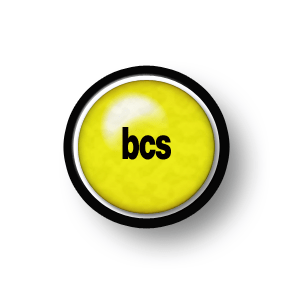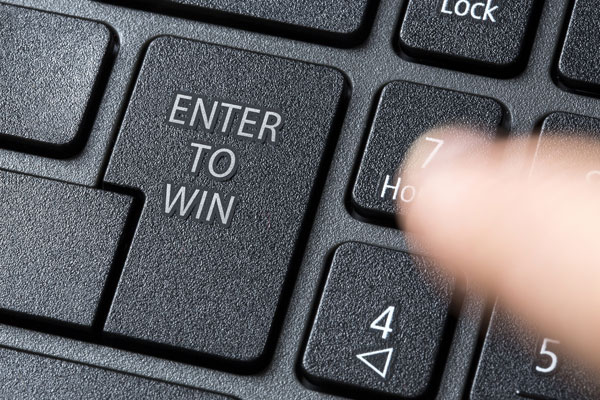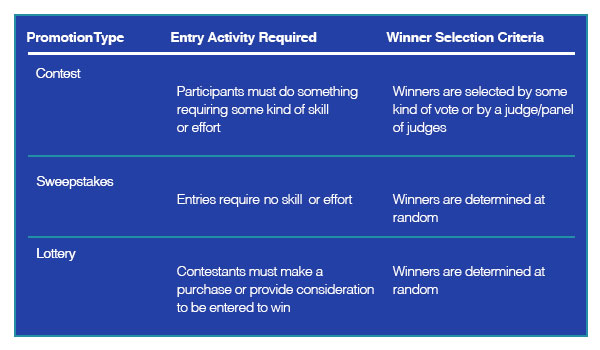Unless you’re a casino, non-profit or government agency, you’re probably not going to want to go through the hoops necessary to get a state gambling license so you can operate a raffle. In fact, in some states, there’s nothing an individual or business can do to get a license to hold a raffle.
So, let’s make this a binary decision, shall we? Do you want to run a contest or a sweepstakes? Pick one.
And once you’ve decided on what kind of promotion you intend to run, you need to determine which media platforms you intend to use to support it. Your options include (but aren’t limited to):
• Your website
• Traditional media (TV, radio, newspaper)
• Online media (Facebook, Twitter, Instagram)
• In-Store (on the counter, in a display, etc.)
• Via Email (to customers and prospects)
• Via Employees (to their friends and family)
When it comes to understanding how to run a great promotion, it’s important to avoid the easy answer and say “all of above” – but that can make your life difficult. It’s important you understand the rules of what you can and cannot do on each media channel. Obviously, the message you send to (and through) your employee channel needs to be different than what you say in-store.
And when you consider social media platforms like Facebook, you have to be up on their terms of service for running promotions. Terms from social media networks vary and can change without notice. That’s why at Brand Central Station, I use Rafflecopter when running contests and sweepstakes on social media.
Nail Down Your Fundamentals
Once you’ve decided what kind of promotion you want to run you need to set the fundamental pieces into place:
• How long will your promotion run?
• What are you giving away?
• Who’s eligible to win?
• What must a contestant do to win?
• Is a purchase required? (The answer should be “no”!)
• When will you select the winner(s)?
• How will you notify winners and all other entrants?
These all seem like relatively easy decisions, but everyone’s circumstance is different so no two promotions ever have the exact same set of fundamentals.
For example, when you’re talking about the length of a promotion – the size of your social media following can be a huge factor. Most promotions promoted agressively over social media see the majority of their entries in the first 3-7 days of a contest. However brands with large followings may find a one-day promotion (24 hours) to be plenty of time to rack up tens of thousands of entries.
The kind and number of prize(s) you’re offering makes a difference, too. According to Instagram blogger, Alex Tooby, prize selection makes a significant difference:
“Make sure the prize you choose is something your [audience] needs.”
Rebecca Kowalewicz, from Clearbridge Branding Agency, provides similar advice in her column on the Forbes Magazine website on Facebook giveaways:
“The advice we often give [our clients] is to ensure the prize not only ties to their brand but is something the winner will want to talk about online …”
Note the importance both experts put on making the prize(s) relevant and valuable enough to get some buzz started (and create some viral traffic in the process).
Once you’ve got some great prizes selected, you need to figure out exactly who is eligible, what they have to do to win and more. These are the “rules” to your promotion and need to fit within the guidelines established by every state in which you plan to run your promotion.
The best way to make sure you stay “legal” is to make the promotion simple. Don’t make it too hard to enter or inadvertantly create loopholes that could turn your giveaway into a raffle.
Your promotion’s rules should also include specifics about when you’ll select the winner, how that winner will be selected and notified and what happens if you can’t reach the winner. Believe it or not, a significant percentage of contest “winners” never respond to an email notice telling them they’ve won.
Finally, make sure you publish your rules so everyone can find them. Sometimes that may be in disclaimer type under and entry blank, in other cases it may be a page on your website that puts the rules just one click away. Just make sure the rules are findable and pass muster.
Building Your Team
When it comes to getting all of these pieces of the puzzle pulled together, you need to make sure you have a full team of pros to help you.
That means you should have a creative team to create ads, promotional graphics, promotional collateral, etc. and a media specialist who can help you get the word out.
You need to have a social media whiz on hand to help you engage your fans, friends and followers to gin up excitement, participate in the promotion and share it with their friends.
A website manager is a critical member of the team since so much of the promotional activity will, at one point or another, have to run through your website. Paired with an email marketing specialist, they can work together to build repeat traffic and capture as many leads as possible – which will continue to produce dividends long after the promotion has ended.
Having internal management on-board is key, too, especially if the promotion is designed to drive retail trafic (either to a brick-and-mortar location or to a website). Frontline employees and customer service reps who are well informed and excited about your promotion have a multiplying effect on the effort.
Last, but not least, you really should have a promotions expert on hand who can help keep people focused on the big picture goals and objectives and discuss individual tactics from that perspective.
Promoting Your Promotion
Once the team is in place and the plans are made, you need to start the promotion. But that isn’t done by just firing all barrels at once.
No, despite all your planning and production, the fact is no one really knows what’s coming and, as a result, no one is prepared to respond. That’s why you must promote your promotion before you pull the trigger.
Whether you decide to run a traditional “teaser” campaign, share images of prizes in advance on social media, blog about the coming contest on your website – or all of the above – you need to make sure that those closest to your brand know and understand that something special is about to happen.
Here are a few suggestions for you to consider:
• Publish and push out stories that relay the “why” behind the promotion to create context for the promotion’s messages.
• Pitch bloggers and reporters on getting a “sneak peak” at what you’ll be promoting – especially if it’s a new service or product.
• Provide select customers or employees with a 24-hour sneak peak opportunity to enter early or enter to win exclusive prizes.
• Put a countdown timer on your website.
• Create a contest-specific video and share it through social media.
• Livestream the start of the contest.
There are more ways to build excitement behind the launch of your contest, of course, but they all try to achieve the same thing … prepare your audience to enter and to share that engagement with their friends and family.
On the creative side, be sure your graphics for the promotion include pictures of your prize(s) whenever possible. Consider using a custom hashtag on all promotional messages and encourage entrants to do the same thing.
Whatever happens, it’s important to stimulate as much positive chatter as you can about the progress of the promotion both right before kick-off and during the promotional period.
Celebrate Your Victories
Once your promotion has run its course and all the entries are in, it’s time for the fun part – picking and notifying your winner(s).
Be sure to select the winner(s) of your promotion on the date specified in the rules and then verify that each winner is qualified under the published rules. Failing to do this exposes your company to possible legal action, so pay attention!
Next, once winner(s) are selected, notify them right away. I usually make sure we create a social media post announcing the fact a winner (or winners) has been selected and that we’ve sent them an email notification. This does a couple of things: it establishes the fact that we’ve followed the rules of the contest and puts folks on notice that if they get an email from us telling them they’ve won a prize – it’s probably legit.
You would not believe how many times I’ve had prize winners tell me they didn’t believe my email when they first read it.
After the prize has been awarded (shipped and recieved), it’s time to celebrate with the community of fans, friends, followers and customers you’ve helped build. If possible, post a picture of the winner with their prize – or try for some kind of “endorsement message” that can be shared on social media.
Sometimes, a winner’s story is so compelling it creates more opportunities for a promotional bounce: via a news release or guest blog post, a share on social media, a unique photo op, etc.
When it’s all said and done, celebrating the victory with your community is an essential step in closing the loop with customers, so be sure to take it.
Take a Look at Your Results … and Do It Again!
Hold on one second … where do you think you’re going? Just because you’ve shipped off the prize and posted their name on social media, that doesn’t mean you’re done.
In fact, the most beneficial part of the entire promotion process is about to begin. It’s time to break down the “game film” and figure out what worked.
And more importantly, what didn’t.
Start by laying out your original business objectives. Were they achieved? Were you able to determine exactly how they were achieved? It’s likely that whether you achieved the results you wanted or not, the path they took from initial contact to final purchase (or click-through or email registration) didn’t happen exactly the way you imagined.
That’s okay. It’s all part of the process.
And thanks to your promotion, you’re now able to break down every step of the customer’s entire journey and make some adjustments that will improve the performance of your next promotion.
Next, take a look at those communications objectives. Do they need to be adjusted? Were they wildly optimistic or needlessly conservative? Try to draw the bullseye a little smaller for the next promotion – but use what you learned this time to make sure you put the board on the right wall.
Finally, take a look at the entries and interactions. What worked and what didn’t? What operational changes need to be made so things run smoother next time and, just as importantly, what messages need to be changed to set the customers’ expectations to something that’s much more likely to be achieved?
What you learn through careful scrutiny will not only yield immediate returns with existing customers, it will help inform your decisions on the next promotion to make it even more successful.
Congratulations, you’re a winner!




Comments